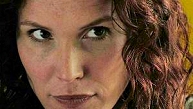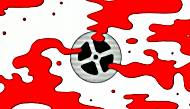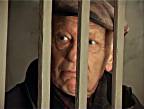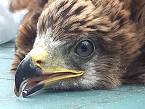
|
The world of non-commercial film and A-V |
Events Diary | Search | ||
| The Film and Video Institute | | ||||
Getting Pictures?
|
|
|||||
| Pictures bring life to the page. At one glance they tell us a great deal.
Websites with striking images - carefully placed - catch the eye and draw
the casual visitor in. The web only came to life when it became practical
to include pictures.
But what we see most often are uninspiring photos or poorly drawn logos. |
It's partly an attitude. Is the members' page a file of passport pictures or a set of portraits? Is the report of a current shoot a continuity shot for reference or a forceful image of people hard at work? Are the awards pictures a "legal" record of the event or a celebration of the winners with their trophies? Is the group shot dully posed, bored people or a bunch of friendly enthusiasts? | |||||
If you meet in an attractive or easily recognised place you might use a picture as your front-page logo. |
||||||
People like people |
Films are our life |
|||||
| Forget sexy equipment ... we all enjoy pictures showing people. Human
beings are - despite all the evidence to the contrary - basically social
animals. We are interested in each other.
But the pictures have to tell us something about those people. (If you get the chance, look at a "casting book" with pictures of actors. Each presents a neutral portrait, hoping a director will see how that face could be made to look happy or tragic or whatever is needed for the next production. Such images are profoundly boring.) |
Film clubs - and some members - have no reason to exist except for the
movies they make and enjoy. We are surrounded in life by Hollywood film stills
in magazines, newspapers, billboards and the web. Where are the stills from
our work?
A few good screen-grabs can say a lot about the nature of a film. They make people want to see the video and to meet the folk who made it. They are usually more interesting and dramatic than talks and demonstrations in the clubroom. |
|||||
|
||||||
Taking pictures |
Finding pictures |
|||||
| Photos from any camcorder, cell phone or stills camera are usable on
a website. There is no need for thousands of pixels - web pictures are small
and presented at low resolutions.
Take lots of pictures at the club, during events and when filming. Lots and lots. At home afterwards you can sift through them to choose a handful of the very best. Close-ups work better on the web than long shots. Big close-ups are even better. If the situation allows - step forward and pose people, move things, add lights and so on. At the time people may tut-tut but when they see the results they are happy. If you cannot interrupt, grab what you can from as many angles and degrees of close-up as possible ... then try to catch the main people concerned in a break or after the event and pose them. They might grumble but most people are flattered to be asked. Most women have a good idea of their "best side" and how to pose. Most men are clue-less. Next time you are in a pub or restaurant where they hang pictures of celebrities who have visited them, note how the stars look assured, pleasant and comfortable while the restaurant staff look embarrassed. Check the poses of the stars and encourage your subject to adopt an appropriate one. Taking good portraits is a special skill and needs decent camera technique but also a good way of relating to the subject of your picture. For a general guide look at http://photo.net/learn/portraits |
It's always best to use your own pics. But to add excitement to a page
you may have to see what you can find. Search engines like google and bing
have dedicated image search option ... but beware of copyright. A website
is visible worldwide. Some photographers get very angry about their work
being "borrowed".
Almost any picture in a book, magazine, on a record cover, and poster is out of bounds, as are most images on the web … but not all. There are websites of "stock images" which sell the right to use their pictures. Some also have free images e.g. Stock.XCHNG (www.sxc.hu) - check the terms of use for each picture. Creative Commons refers to licences intended to help the sharing of pictures and information without charge, but subject to some limits. (Most Wikipedia content comes with such a licence, so it can be used easily. Look at http://commons.wikimedia.org/wiki/Main_Page) Many pictures on photo site Flickr (see www.flickr.com/creativecommons) are available under this scheme. And you can always ask. More than once I have found a great image online, emailed the photographer, explained what I wanted to use it for and that there was no money available. Many people allow the use provided you give them the credit for the work. |
|||||
|
||||||
|
Website Makeover Guides - Introduction
What Should the Content Be? |
Navigation |
Planning Navigation
| Anchors & Links |
Words |
Getting Pictures |
Getting & Using
Pictures A Beginner's Guide to Creating a Club Website with Weebly
Don't Panic! |
Signing up to Weebly |
Making your first (elegant) page
| Adding more pages and
navigation |
||||||
Share your passions.

Share your stories.




